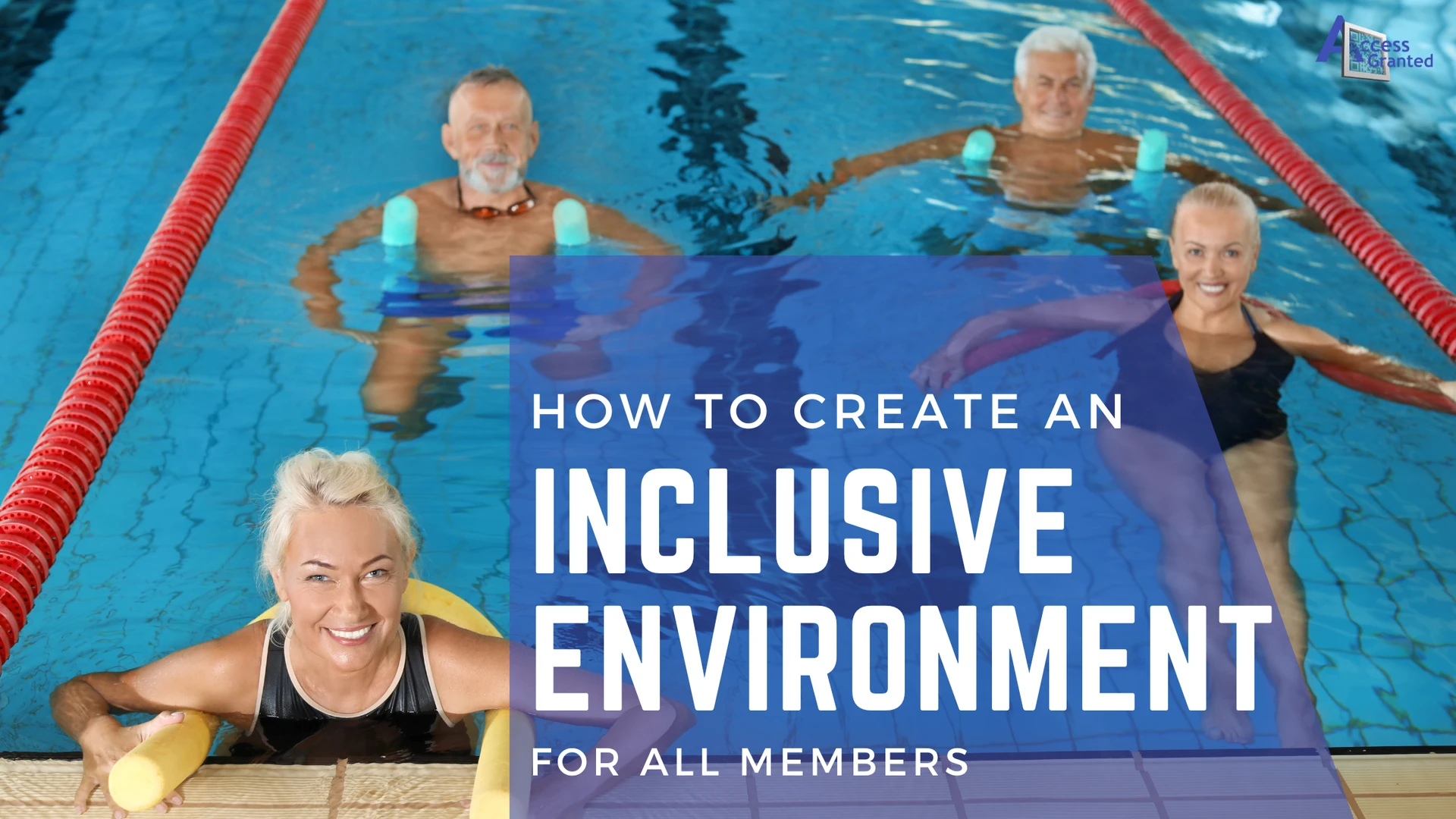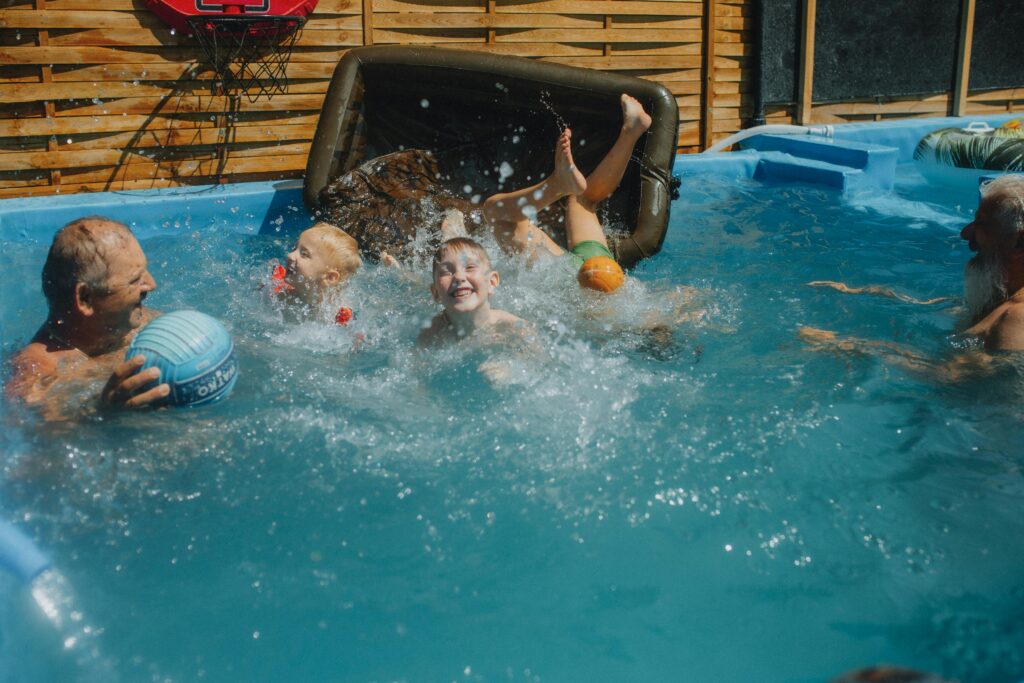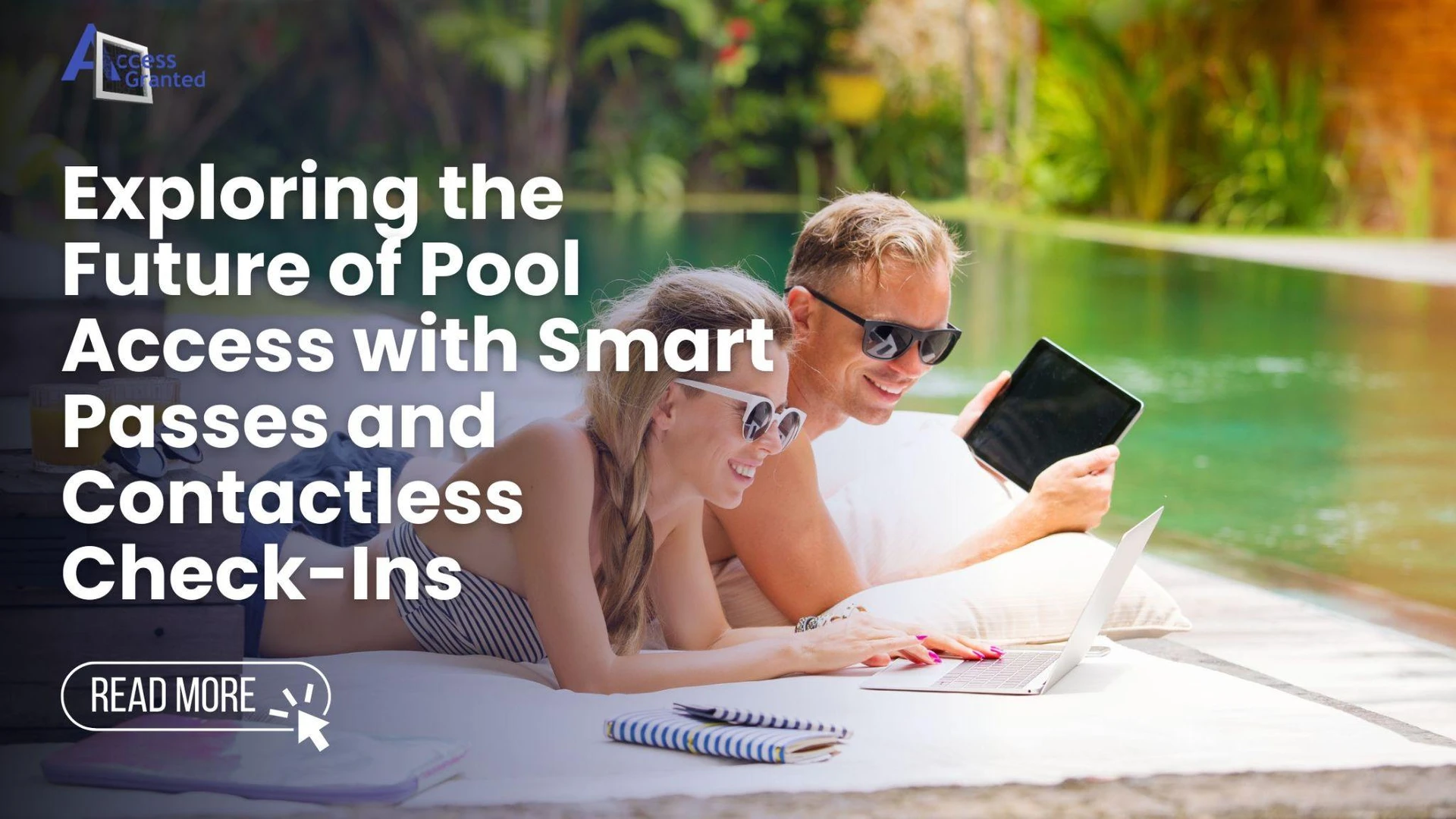The blog explores how smart passes and contactless check-ins are revolutionizing pool access, offering faster…

Creating an Inclusive Environment for All Members
⦁ Equip staff with proper training on disability awareness and cultural sensitivity to ensure they can effectively meet diverse member needs with empathy and professionalism.
⦁ Make facilities inclusive through physical features like ramps, pool lifts, and clear signage, while also maintaining accessible digital communication, such as websites with alt text and clear language.
⦁ Provide varied programs that cater to different age groups and abilities and establish clear, fair policies that promote respect, protect against discrimination, and encourage continuous feedback for improvement.
An inclusive environment is vital for any facility that serves a diverse group of members. Whether it’s a community pool, gym, or social club, fostering an atmosphere where everyone feels welcomed and respected can improve overall member satisfaction and loyalty. Inclusivity goes beyond simply allowing access—it requires thoughtful planning, communication, and continuous effort.
What Is Inclusivity?
Inclusivity means that everyone feels valued and included regardless of age, background, or ability. It involves recognizing the unique needs of different member groups and ensuring that everyone has equal access to your facility and services. This approach helps create a community where every member feels respected and empowered to participate.
Key Principles of Inclusion
Creating an inclusive environment relies on following several key principles. These principles help guide interactions, policy development, and everyday operations in facilities to ensure all members feel valued and included.
Respect
Treat every member with dignity and kindness. This includes listening actively, acknowledging their experiences, and avoiding assumptions or stereotypes. When members feel respected, they are more likely to trust the facility and voice their concerns constructively.
Equity
Provide fair opportunities and resources to all members so that everyone has what they need to participate fully. Equity is about recognizing that different people may require different levels of support and adapting resources to meet those needs.
Diversity
To create an inclusive environment, you must celebrate differences and encourage a variety of perspectives. Embracing diversity enriches the community and fosters an environment where members feel comfortable sharing ideas and feedback.
Accessibility
Ensure that your facility is accessible to all members, both physically and digitally. This includes providing ramps, lifts, clear signage, and an easy-to-navigate digital presence. Accessibility also involves clear communication and alternative formats for members who need them.
How Facilities Can Create an Inclusive Environment for All Members
Here is how you can create an inclusive environment for your members:
Offering Programs and Activities
An inclusive environment goes beyond physical accessibility. Facilities can offer programs that cater to different age groups, skill levels, and abilities. This might include special swim hours for seniors, low-impact exercise classes for those with mobility issues, or sensory-friendly sessions for members with sensory sensitivities.
Gyms can implement beginner-friendly workout programs or adaptive fitness sessions to accommodate people with varying experience levels. By offering diverse activities, members can find options that suit their needs, making them feel more connected to the facility.
Training Staff to Support Inclusivity
Staff play an integral role in maintaining an inclusive environment. Proper training can equip them to understand and respond to diverse member needs effectively. Training should include disability awareness, cultural sensitivity, and best practices for communication. Staff should be encouraged to adopt a welcoming and patient approach when interacting with members.
For example, a gate attendant at a pool should be familiar with how to assist a person who uses a mobility aid or provide clear, respectful directions to someone with hearing impairment. Consistent training helps staff handle any situation with empathy and professionalism.
Ensuring Physical Accessibility

One of the first steps in creating an inclusive environment is checking that your facility is accessible to all members. Accessibility includes physical features such as entry ramps, elevators, and accessible restrooms. For pools, adding pool lifts or zero-entry options can make a significant difference. Wide entryways, clear signage, and designated parking spaces are other aspects to consider.
For example, if a social club hosts events, arranging furniture to allow easy movement for individuals using wheelchairs or walkers is important. Making thoughtful changes like these demonstrates that the facility genuinely cares for all its members.
Communicating Clearly with All Members
Effective communication is a cornerstone of inclusivity. Facilities must provide information in various formats, such as printed brochures, digital notifications, and verbal announcements. Visual aids and signage should be easy to understand, using symbols and large fonts to cater to members with visual impairments.
For digital communications, emails and websites should be designed with accessibility in mind. This includes alt text for images and simple, straightforward language. Regularly seeking feedback from members can also help facilities understand how well their communication strategies are working and where improvements are needed.
Supporting Different Needs
Inclusivity means acknowledging and supporting the different requirements of your members. This could include offering noise-free hours for members with sensory sensitivities, providing gender-neutral changing rooms, or allowing service animals on-site. Facilities that are proactive in accommodating various needs demonstrate that they value all members equally.
Promoting Inclusive Policies and Guidelines
To create a truly inclusive environment, facilities must have clear policies that promote fairness and respect. This includes rules on member conduct that protect against discrimination and ensure a welcoming atmosphere. Policies should outline acceptable behavior, consequences for breaches, and steps for members to report concerns.
It is important for members to know that inclusivity is a priority. Displaying these policies in visible areas, such as entranceways or common rooms, can remind everyone of their responsibility to maintain an inclusive space.
Educating Members on Policies and Expectations
Clear communication about facility policies helps set expectations and can prevent misunderstandings that lead to complaints. Transparent signage, member handbooks, and regular announcements can remind everyone of the rules and ensure that they are understood by all. Inclusive policies should be framed to consider different member needs so that no group feels left out.
Creating Spaces for Interaction
Building a sense of community is another way to foster inclusivity. Facilities should provide spaces that encourage interaction among members. Lounges, picnic areas, or designated social corners can create opportunities for casual conversations and connections. Organizing community events, such as pool parties, fitness challenges, or workshops, can also help members feel more involved.
For instance, a gym could host an open house day where members of all ages are invited to try different classes and socialize. This not only introduces members to new activities but also encourages friendships and collaboration.
Encouraging Feedback and Continuous Improvement
Inclusivity is an ongoing effort that benefits from regular feedback. Facilities should create channels where members can share their thoughts, such as suggestion boxes, surveys, or online forms. Gathering input helps management understand which aspects are working well and which need improvement.
Acting on feedback demonstrates that the facility values its members’ voices and is committed to positive change. This process helps facilities evolve and keep pace with the changing needs of their community.
Building a Clear Complaint Resolution Process
A structured approach to handling member complaints is critical. Outlining a clear process ensures that members know how their issues will be handled, which promotes transparency. Steps should include acknowledging receipt of the complaint, investigating the issue, providing updates, and sharing the final resolution. This process should be consistent for all members and applied fairly.
Staff training is necessary to maintain an inclusive and respectful complaint resolution process. Employees should be trained to respond calmly, listen actively, and communicate effectively with all types of members. Regular workshops can help staff stay updated on best practices for handling complaints inclusively.
Ensuring Sensitivity and Empathy in Responses
Responding to complaints with empathy is another key aspect of maintaining positive relations. Staff should listen without interrupting, acknowledge the member’s feelings, and offer genuine apologies when appropriate.
Inclusivity extends to ensuring that complaints from marginalized or underrepresented groups are treated with the same seriousness as any other. If a member feels that their culture, identity, or needs are overlooked, it is important to address these complaints thoughtfully and make necessary changes.
How Access Granted Systems Support Inclusivity
Our team at Access Granted Systems offers cloud-based software that streamlines membership management for facilities like pools, gyms, and social clubs. This comprehensive solution helps create a more inclusive environment through efficient service and accessibility features.
Simplified Member Registration and Pass Distribution
We make the application process easy by allowing patrons to register online and receive pool passes directly to their homes, or opt for an electronic version. This convenience ensures that members of all backgrounds, including those with mobility challenges, can access services without barriers.
Seamless Check-In Process
With a user-friendly check-in feature, gate attendants can quickly register members and guests, reducing wait times and fostering a welcoming experience. This efficient system also enhances interactions by allowing staff to focus on providing support and assistance rather than administrative tasks.
Comprehensive Tracking and Reporting
The software keeps track of visitor statistics and important records, helping facilities better understand usage patterns and member needs. This data can be invaluable for continuously improving accessibility and developing programs that cater to a diverse community.
Flexible Payment and Guest Pass Options
Access Granted Systems enables facilities to collect membership fees and sell guest passes online, accommodating members who prefer different payment methods and improving overall accessibility.
Final Thoughts
Creating an inclusive environment requires commitment, thoughtful design, and continuous attention to member needs. By adopting the above strategies, facilities can create spaces where everyone feels welcome. Encouraging member feedback and adapting to new challenges will ensure that inclusivity remains a core value. An inclusive environment is not just beneficial for members but it strengthens the community and supports long-term growth.
Streamline your facility management with us at Access Granted Systems. Whether you manage a community pool, gym, or social club, our solutions help simplify member policies, improve supervision, and maintain a safe, inclusive environment. Take the first step toward seamless facility operations. Sign up for a demo today and experience effective, comprehensive management solutions for all your membership needs.




This Post Has 0 Comments